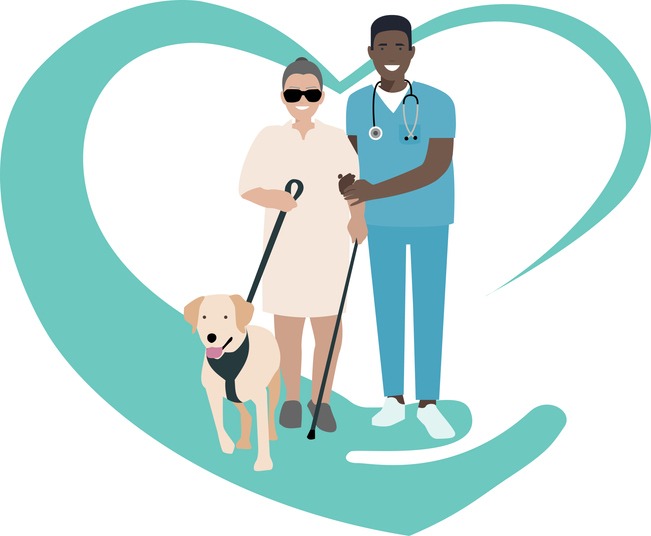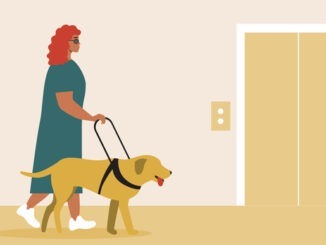
Understanding what kind of animals can enter your GP surgery is important for any practice manager to know – find out more below
CREDIT: This is an edited version of an article that originally appeared on Practice Index
What kinds of animals should be allowed in the surgery, and secondly, what classes as an ‘assistance animal’?
This is an interesting subject and one that’s been explored as part of updates to the Assistance Dogs and Other Animals Policy. This policy considers various areas including infection prevention control and other measures such as the legal requirement that needs to be considered to keep you compliant.
On the surface, it seems to be quite a simple subject – that is, practices are obliged to have assistance dogs on the premises as we must comply with both the Disability Discrimination Act 1995 and the Equality Act 2010.
But what exactly is an ‘assistance dog’?
The Equality Act 2010 s173(1) outlines the legal definition: assistance dogs are usually those that have been trained by a charity such as Guide Dogs for the Blind. As such, you’d hope that any animal coming into the premises would be clearly identified as a working dog and that it would have been trained to support their owner who has a specific need.
However, this isn’t always the case. While there is an official training standard, there is no legal requirement for an assistance dog to have been trained by a charity, or even for the owner to carry any specific identification to prove that it’s a working animal. But without proof that can be requested, or any confirmation of training, how can we be sure that dogs entering the practice are really assistance dogs?
This is the guidance from the Equality and Human Rights Commission, highlighting why assistance dogs should be welcomed inside business premises. In fact, if the canine is refused entry, the consequences of disability discrimination litigation may become a possibility.
It should be noted that there are many cases of companies being fined for not allowing assistance dogs into their premises or taxi; as such, these companies have fallen foul of the requirements of the DDA.
Of course, it’s vital that we all ensure we don’t make life harder for those who need an assistance dog – but, surely, having evidence, such as the dog being listed on a national register, would be sensible? Perhaps the dog’s status and details of its training could be included on a plastic ‘credit card’ or small tag placed on the dog’s lead or collar?
Having this kind of evidence would make life easier for the owner if they ever had to explain to a restauranteur, shopkeeper or GP receptionist that the dog had a right to be there.
Do you allow animals?
In a recent poll on the Practice Index forum, a significant majority of members stated that, apart from assistance dogs, they don’t allow animals into their practice, and some practice managers insisted on seeing proof of training for dogs.
They believed that no proof of training meant that the dog must be a pet and not an assistance dog. Whilst this is a pragmatic approach, one must be cautious as we already understand that there’s no requirement to prove the status of the animal. As such, you could find yourself falling foul of the legislation.
Some surgeries do allow all dogs into the reception area, but this is each practice’s choice. Please remember that we must consider all of our patients. Some patients will have an allergy to animals, some will be immunosuppressed, and others will be frightened or have a phobia of dogs.
We must also think about the potential increased IPC risk posed by canines. Even dogs that are tied up outside the practice for a while may leave something smelly for people to tread in.
Therefore, having some guidelines in place, so that staff members know the recommended procedures, is advisable.
Are animals allowed in other healthcare settings?
Therapy dogs are often seen in children’s hospitals or care homes. These canines are an essential part of Animal Assisted Therapy (AAT), and their handlers work alongside healthcare professionals as part of a care plan. Of course, these dogs receive specialist training.
Also, there is Animal Assisted Activity (AAA), where a handler may bring in a dog for general interaction; these dogs are usually the handler’s pet, so wouldn’t be in the same category as AAT dogs. Then there are other animals, such as Shetland ponies, cats and more, that may be introduced into a healthcare setting to allow people to stroke or interact with the animals.
However, as our patients make only fleeting visits to our practices, it’s unlikely that any type of therapy animal would be used in a GP practice setting.
Risk management
It is advised that any employer must have a policy in place if they permit pets or other animals in the workplace. Furthermore, the employer has a duty to take reasonable care of the health and safety of their employees, so they should consider all the risks involved and take any reasonable precautionary steps.
Therefore, it’s suggested that if you allow animals into your practice then, as a bare minimum, you should complete a risk assessment. Secondly, it is advised to discuss this issue with your insurer to find out exactly where you stand.


Be the first to comment